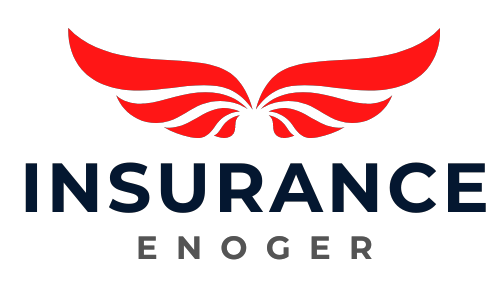For many, running a charter fishing boat along our breathtaking Australian coast—whether you’re hunting tuna south-east or barramundi up north—is a dream job. It gives great satisfaction to share your love of the water and assist others in landing the fish of a lifetime.
Like any business, though, especially those involving unpredictable seas and paying customers, it carries hazards. Your vessel, your guests, and your livelihood are first priorities; thus, the correct insurance helps you to protect them.
Calculating the cost of that protection, though, can occasionally feel as difficult as navigating a reef system at low tide. Why does one charter operator pay either much more or less than another? It is more than just a figure snatched from thin air. To determine your premium, insurance companies carefully consider a number of elements particular to your business.
Knowing these elements will help you control your risks and potentially reduce your future expenses. Let’s explore the elements that really count.
Your Pride and Joy: The Vessel Itself

Clearly, the boat you operate has a significant impact on your insurance premium. Insurers examine many facets of your vessel very closely.
- Value: The main factor is market value, or agreed value; ensuring a brand-new $500,000 vessel built for offshore game fishing will naturally cost more than covering an older, smaller boat used for estuary trips. A major factor in the case of a total loss is replacement costs.
- Age and Condition: We also pay close attention to the state and age of your boat. Whether old or not, a well-kept vessel usually poses less risk than one displaying evidence of neglect. Regular maintenance and repair show trustworthy ownership.
- Specifications: As these influence possible repair costs and risk profiles, the size, construction material (fibreglass, aluminium, or timber), and engine type (inboard, outboard, or horsepower) also feed into the calculation. Consider this: fixing a basic tiller-steer tinny is usually less costly than repairing complicated electronics or powerful twin diesel engines.
Where and How You Operate Matters
Your insurance expenses depend much on the type of charter operation you run.
- Operating Area: Where do you usually see your customers? Generally speaking, running regular trips offshore in open waters—where you face bigger waves, stronger currents, and perhaps more severe weather events like cyclones common in parts of Australia—is more dangerous than running just in sheltered inland waterways or estuaries. Your policy’s stated geographical operating limits will directly mirror this risk assessment.
- Frequency and Type of Use: On what frequency do you operate? Daily year-round use of a boat offers a different risk profile than one used just on weekends or seasonally. This kind of fishing also counts. Are you pursuing large game far offshore or engaging in relaxed estuary excursions? Night trips or high-speed searches could pose different hazards than regular daytime charters near port. To estimate the probability of possible events, insurers must have a clear picture of your usual activities.
- Safety Standards: Moreover, following safety regulations, such as those described under the National Law framework by the Australian Maritime Safety Authority (AMSA), shows professionalism and may help to change insurer views.
The Skipper and Crew Factor

Your experience and that of every crew you use is another crucial component.
- Skipper Experience: A skipper with years of incident-free commercial experience and relevant qualifications (such as a Coxswain or Master 24m Near Coastal certificate) is seen more favourably than someone fresh to the sector. A proven track record shows ability and safe working methods.
- Claims History: Frequently asked by insurers is your claims history. Previous claims, particularly if frequent or severe, can sadly result in higher premiums since they might point to a riskier profile. On the other hand, a protracted absence of claims might occasionally result in loyalty discounts or better terms.
- Crew Qualifications: If you use deckhands or other crew members, their backgrounds and credentials could also be taken into account since they help the charter run generally safely. Not only is it good practice, but risk management depends on everyone onboard being appropriately educated on safety policies.
Selecting Your Coverage Shield
Of course, the particular kinds and degrees of coverage you choose will directly affect the premium that results.
- Basic Liability: Protecting you should a passenger be injured or third-party property be damaged is basic liability coverage. Most operators, though, require more all-inclusive protection.
- Hull & Machinery: Hull and machinery cover shields your actual vessel from physical damage or loss from events including collision, grounding, fire, storm, or theft.
- Protection & Indemnity (P&I): Protection and Indemnity (P&I) insurance follows, sometimes covering a wider spectrum of liabilities, including possible pollution events or wreck removal expenses.
- Optional Covers: Should damage prevent you from operating, you could also take into account cover for your fishing equipment, personal belongings aboard, or even business interruption.
- Limits and Excess: The cost will also change depending on your choice of deductible or excess you are ready to pay on a claim and the limits of your liability cover—e.g., $10 million against $20 million. Generally, a higher excess leads to a lower premium, but if you need to make a claim, your out-of-pocket expenses will increase.
Customising your commercial boat insurance policy means juggling your budget with the level of protection required. It’s about discovering that ideal mix between cost and thorough coverage.
Closing It Up
As you can see, securing insurance for your charter fishing boat is a multifaceted process. Your vessel’s particulars, how and where you use it, your experience behind the helm, and the layers of protection you decide upon all combine to define you.
Understanding these important elements will help you to keep your vessel in good condition, run safely, keep good records, select your coverage, and so position yourself. Although insurance is a cost of running a business, consider it an investment in your peace of mind so you can continue to share those incredible Australian fishing adventures for many years to come.
Has the cost of your charter boat insurance been particularly affected by any one element? Comment below your experiences or questions; we would be delighted to hear from other operators!





